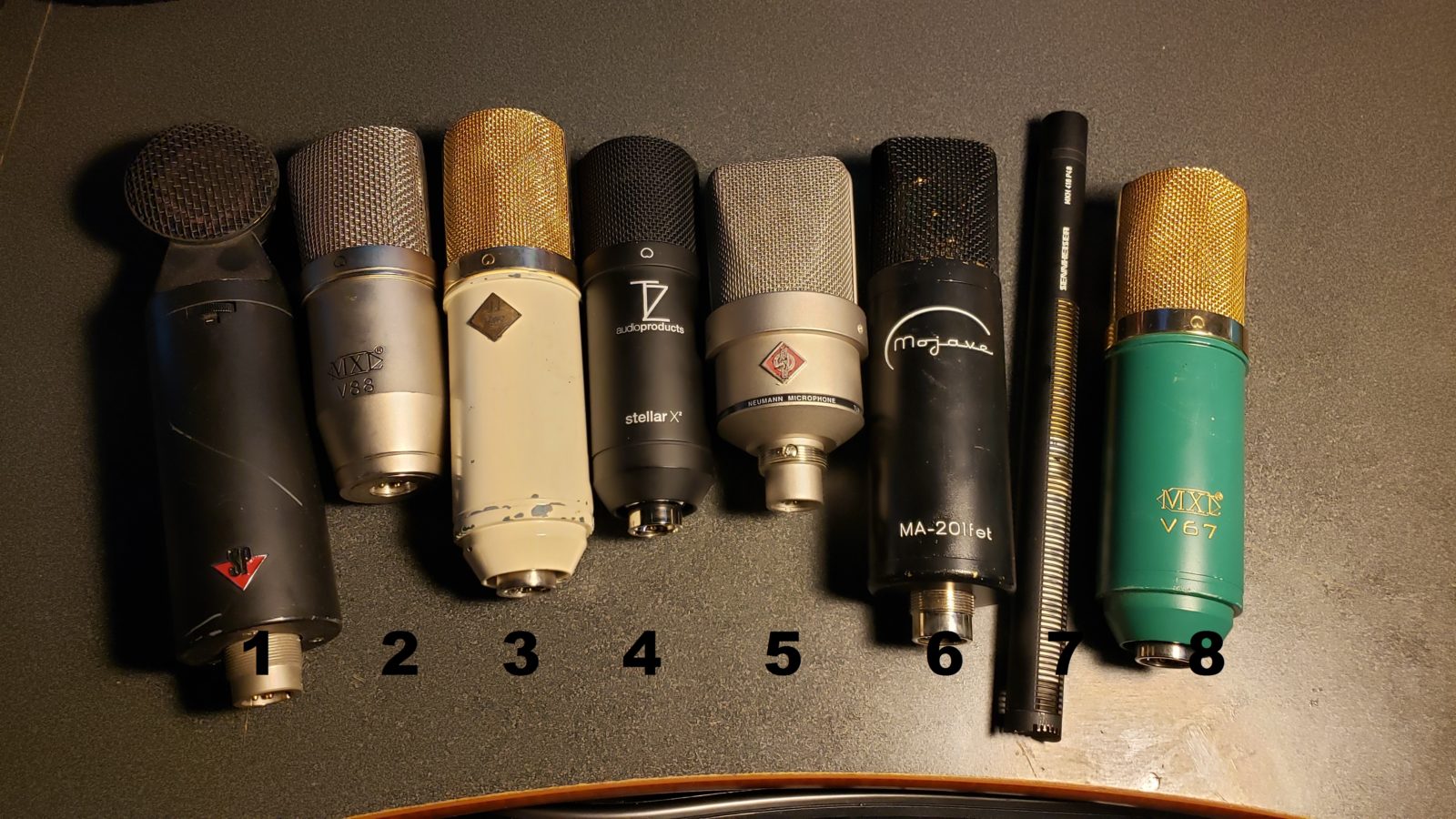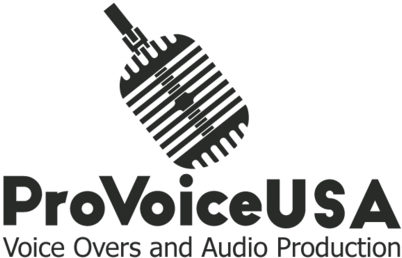Are you wondering what the best voice over microphone is to get started with? Or are you a seasoned voice over pro looking to reach the next level? Hopefully this blurb can help you help a little bit with what you are trying to figure out. I have been doing voice overs for over 20 years, and have probably bought/tried/sold over 50 microphones over the years to find out what worked best with my voice (and which are the best universal microphones for a range of voices). Granted 15 years ago I didn’t really know what sounded ‘best’ in terms of on the tv/radio/web, but I was focused most on what made my voice sound the best in the studio, big and hi-fi….but when that gets played on a tv with crappy speakers, or a radio in a car that has eq already set, it would just sound like a muddy mess. So after 20 years, I think I have gained some good knowledge of what microphones are good for beginners, or the next step up. Below is a picture of my current arsenal. From left to right, they are 1), Studio Projects C3 with JJ Audio mod, 2) MXL V88, 3) JJ AUdio Greyhound, 4) TechZone Audio Stellar X2, 5) Neumann TLM 103, 6) Mojave 201, 7) Sennheiser MKH 416, and 8 MXL V67 with a cheap capacitor mod.

Mics 1 and 2 I almost never use. I bought them, had number 1 modded and can never sell it for what I have invested in it. Mic 2 is good, full bodied and new around $200. Don’t know if they make them anymore and there are other less cost options that sound as good, if not better. If you can find an MXL v88 for under $100, could be a good deal. Mic 3 is pretty cool. It’s based on the MXL V67 mic (mic on the right), but has a complete upgrade from JJ audio. It really sounds similar to the original (better sounding) Neumann 87, very mid forward, not high fidelity. I keep it for jobs that need that kind of low-mid forward sound, such as a long form documentary style read. Mic 4 is getting a lot of attention right now for being a great budget voice over mic. They are like $200 new and they do sound really good. To my ear it’s a mix between the TLM 103 (mic 5) and Sennheiser (mic 7) in terms of over-all frequency response and forward-ness. I am actually selling it due to not needing it, since I have the TLM and the Sennheiser….but if I was getting started and wanted a really good mic that would cover a lot of bases, the Stellar X2 would be a good voice over mic condenser. Mic 5 is the one you’ve seen me blog about, buying one like 4 times. Yes…over the years I have heard that the TLM 103 was a great voice over mic, so I’d buy it, play with it, feel it was too flat, and sell it. Circle back to my ‘not knowing what sounds good on tv/radio’ comment. So yes, I am on my 4th TLM 103 and I will have this one till I retire or it dies. It is a great microphone for narration. Yes, it is pretty flat sounding, HOWEVER, it is clean enough that you can eq it and the EQ won’t make it sound cheap and crappy. HIGHLY recommend this microphone if you are looking for a microphone that will be a good main mic for many years and you do a variety of voice over styles, such as narration, commercial, and yes, even promos. Mic 6 is the one that fills my ‘need to sound hi-fidelity, big and clean’ The Mojave is a great mic. It doesn’t add any saturation to the sound (which most of the other mics do). Saturation is basically a nice faint fuzzy sound, in a good way….think ‘warmth’. That is a good characteristic to have on many mics, but if you plan on doing heavy processing like compression and want to keep the high-fidelity ‘big sound’ like booming lows and clean highs, this is a good mic. I Don’t use it too much, but it comes in handy when I need to do a screamer and I don’t want the end product to sound too distorted/fuzzy. Mic 7, the ‘wow’ mic of most voice over guys…the Sennheiser MKH 416. It is a good mic. It needs a GOOD preamp to not sound harsh. I run the Apollo interface and normally use it with either the V76 tube preamp or the Avalon preamp, it adds some smoothness to it. Then I pair it with the distressor compressor with a little bit of ‘warmth’ dialed in and it provides a nice sound. The MKH 416 is touted as a great ‘cut through the mix’ type of microphone. Yes, it does. However, I wouldn’t use it for reads that really need to be subtle and soft. I’m going to try to add a video link here. This was a spot that I first tried to cut with the Sennheiser, but it sounded too aggressive, so I cut it with the TLM103 and client loved it. https://www.youtube.com/watch?v=F7ZFi91suA4
Microphone 8. If you are just getting started and want a TLM 103 sound for about 1/10 of the cost. Get this one. The MXL V67g. I have convinced about 4 other talent to use this mic as either a main mic, or a backup incase their TLM 103 conks out or they need to travel and don’t want to take the $1000 mic on the road. It has a very similar response as it is new. HOWEVER, if you spend $15, you can get a capacitor upgrade kit. Takes about 15 min to do if you have a soldering iron and ‘okay’ skills. Once you do that, its’ probably 90% as good as the TLM 103 (vs, say, 70% out of the box). I am actually using the V67 this week, just because. I have 2 of them, both with the mods. If you are looking for best bang for the buck, TLM 103 sound alike microphone, the V67g is my recommendation WITH the capacitor mod (ebay it).
All microphones sound different with different preamps/compressors/etc. It’s really hard to tell you how something is going to sound with your voice over space/studio/equipment. But over the years, I have found the above to be true to my environment and ears. Good luck with your voice over microphone hunt!
